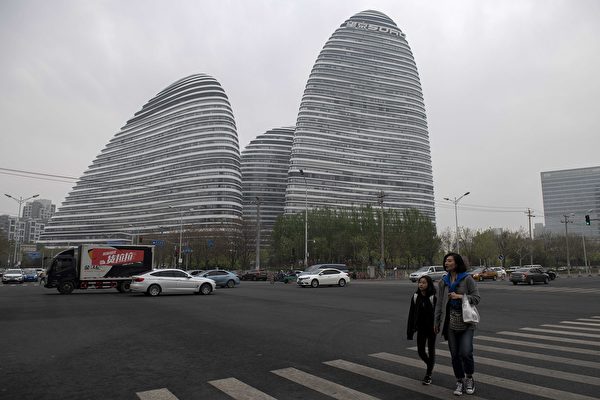In the second quarter of this year, the rental prices of office buildings in major business districts in China are still declining, with market research institutions indicating that the office property market continues to exchange prices for occupancy, leading to a continuous increase in vacancy rates.
According to a report by “21st Century Business Herald” on July 18, a commercial real estate broker in the Wangjing area of Beijing revealed that “two years ago, the rent for Wangjing SOHO was about 10 RMB per square meter per day, now you can get it for less than 4 RMB.”
Multiple institutions’ statistics show that since 2022, office rental prices in Beijing have been continuously decreasing, while vacancy rates have been on the rise. Since last year, some landlords have repeatedly lowered rents. This trend has continued into the second quarter of this year. “Price exchange for occupancy” remains the dominant trend in the Beijing office property market. Although there are differences in specific vacancy rates and rental data among various statistical companies due to different statistical methodologies, the consensus among them is on the “price exchange for occupancy” strategy.
Multiple institutions believe that the large supply coupled with slow demand release is the main reason for this situation. As we enter 2024, this situation has not changed.
Data from Cushman & Wakefield shows that in the second quarter of this year, office rental prices in Beijing decreased by 3.3% compared to the previous quarter, continuing a trend of decline for several quarters. Compared to the same period last year, the drop reached 12.7%.
Reportedly, in China, the financial sector, TMT (referring to industries based on the Internet and other media that include high-tech companies and telecommunications), and professional services still dominate the market demand for office leases in Beijing. These three categories of demand account for about 80% of the market demand. However, the increase in market demand is relatively insufficient, leading to trends such as existing customers leaving Grade A office buildings and reducing lease areas.
Regarding this, Zhang Siliang, Senior Director of Commercial Real Estate Department at Cushman & Wakefield Beijing, stated that in a market environment with insufficient demand, landlords continue to lower rents to attract new leasing demand. Since the second half of last year, “price exchange for occupancy” has become mainstream in the market. For existing tenants, discounts on rent are being offered to maintain stability.
Looking at the market trend for the second half of the year, both Cushman & Wakefield and JLL believe that with the entry of new supply, the market vacancy rate may continue to rise, and rental prices will continue to face downward pressure.
It’s not just Beijing, the situation for office buildings in other key cities in mainland China is quite similar.
China Index Research Institute states that since 2024, landlords have still been reducing vacancy rates through the “price exchange for occupancy” approach, leading to an overall decline in office rental prices in key cities. Among first-tier cities, 16.7% of business district office rents rose compared to the previous period, while 83.3% saw a decline. For second-tier cities, 29.5% of business district office rents increased, 65.9% decreased, and 4.5% remained stable.
A senior industry practitioner, who requested anonymity, mentioned that in some areas of second-tier cities, the vacancy rate for office buildings can exceed 30%.
The China Index Research Institute stated that in the first half of the year, the leasing market for office buildings in key cities has continued the trend of price exchange for occupancy, with overall rental prices still declining.

